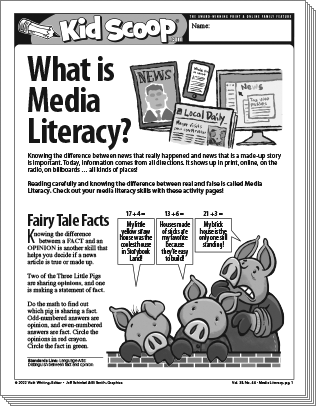 “Extra! Extra! Calling all fairy tale characters! Expert help needed to explain what’s real and what’s make believe!”
“Extra! Extra! Calling all fairy tale characters! Expert help needed to explain what’s real and what’s make believe!”
In this age of technology, learning to identify actual information from “fake” information is a critical skill for students and adults. Even the news can be filled with fiction and non-fiction! By relying on the “make believe expertise” of fairies and fairy tale characters, this issue engages readers by providing guiding questions to fun and familiar stories. The ability to analyze text, differentiate fact from opinion, and apply critical thinking helps students develop strong media literacy skills … and strong media literacy means students won’t automatically accept media messages at face value. This helps readers stay safer and smarter!
In this issue students will:
- understand what is meant by “media literacy”
- recognize the difference between fact and opinion
- learn the meaning of “fake news”
- understand how to decide if a story is true or false
- calculate sums to select factual statements
- write descriptively about a newspaper of your own design
- analyze a newspaper article to identify the intended audience
7 page PDF
